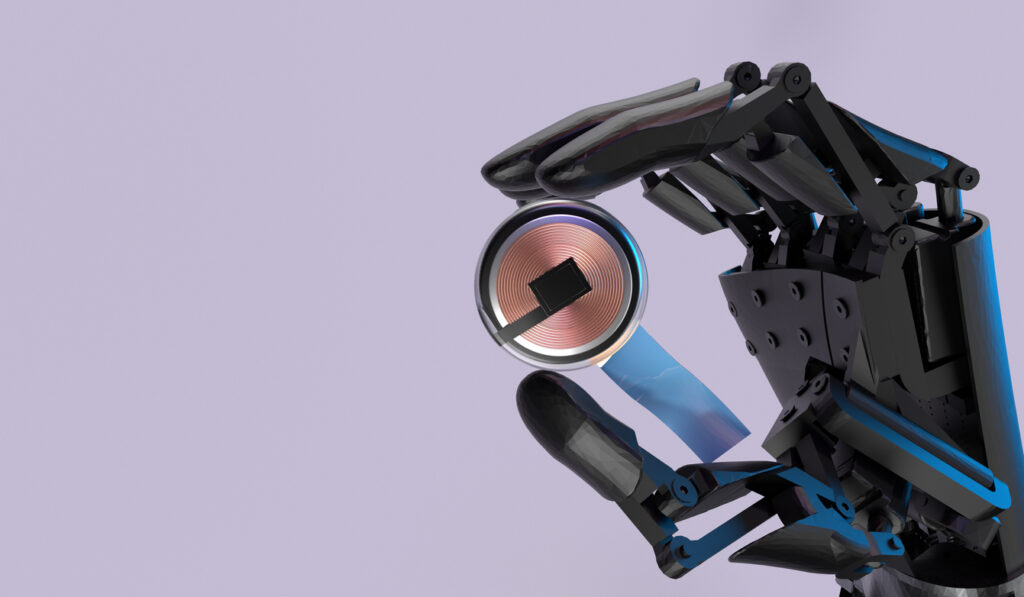In an era where innovation takes center stage, the fusion of neuroscience and cutting-edge technology is pushing the boundaries of what was once deemed impossible. Enter brain technology, the realm where brains and circuits converge, unleashing a wave of transformative possibilities.
From the groundbreaking feats of Neuralink, redefining brain-computer interfaces, to the intricate insights offered by neuroimaging techniques, we traverse the landscapes of science fiction turned reality. Get ready to unravel the secrets of the mind and explore the revolutionary applications reshaping the contours of our cognitive future.
What is Brain Technology?
Brain technology is a multidisciplinary field that fuses neuroscience, engineering, and computer science. It’s the art of decoding and interfacing with the brain’s intricate network of neurons and synapses.
It includes a wide spectrum of innovative tools and approaches. These range from Brain-Computer Interfaces (BCIs) that enable direct communication between the brain and external devices to advanced neuroimaging techniques that unlock the brain’s secrets through powerful imagery.
With this technology, we are gaining new insights into the brain’s inner workings. And we’re also opening doors to a world of practical applications that promise to enhance our lives in remarkable ways.
Brain-Computer Interfaces (BCIs)
These interfaces serve as a direct line of communication between the human brain and external devices. At the heart of BCIs is the idea that our thoughts can be translated into actions within a digital environment.
They do this by monitoring the brain’s electrical activity through electrodes placed on the scalp. These can even be implanted directly into the brain.
Then, the software processes and decodes the signals generated. This allows users to control computers, prosthetic limbs, or other devices with just their thoughts.
BCIs have shown incredible promise in the field of healthcare. They offer hope to individuals with paralysis and allow them to regain control over their lives.
BCIs are increasingly being explored for enhancing cognitive abilities. This could potentially enable direct brain-to-brain communication. They could even open new horizons in entertainment and gaming.
While BCIs are still in their early stages, their potential to transform the way we interact with technology is nothing short of revolutionary.
Neuroimaging Techniques
These are the eyes of the complex world of the human brain. They provide us with the ability to visualize and map brain structures and functions. This helps scientists and doctors understand the inner workings of this remarkable organ.
Functional Magnetic Resonance Imaging (fMRI) tracks changes in blood flow in the brain. This allows us to observe which areas become more active during specific tasks or processes. This non-invasive method provides valuable insights into brain function. It aids in the study of cognitive processes, emotions, and even disorders like Alzheimer’s disease or schizophrenia.
Another essential tool is structural MRI. This produces detailed 3D images of the brain and helps identify abnormalities or changes in brain structure over time.

Positron Emission Tomography (PET) scans involve injecting a small amount of radioactive material into the body to measure metabolic activity. It provides vital information about glucose consumption and neurochemical processes.
Neuroimaging has revolutionized our understanding of the brain, enabling early diagnosis of neurological disorders, precise planning of surgeries, and enhancing our knowledge of the brain’s role in behavior and cognition. As these techniques continue to advance, they promise to unlock even deeper mysteries of the mind and improve the lives of countless individuals.
Applications Of Brain Technology
In the field of healthcare, brain technology has emerged as a powerful ally. BCIs are making significant strides in assisting individuals with paralysis or neurological disorders. These interfaces enable users to control robotic limbs, wheelchairs, or communicate through computers using their thoughts. They offer newfound independence and an improved quality of life.
Brain technology plays a pivotal role in advancing neurology. Techniques like fMRI and PET are instrumental in diagnosing and studying various neurological conditions. These imaging tools provide unprecedented insights into the brain’s structure and function, aiding in the early detection and treatment of disorders such as Alzheimer’s disease and epilepsy.
Beyond healthcare, the impact of brain technology extends to education. BCIs, for instance, hold the potential to enhance cognitive abilities and facilitate more immersive learning experiences.
Imagine a future where students can absorb information directly through brain interfaces, opening new frontiers in personalized education. As brain technology continues to advance, its applications promise to redefine not only how we perceive and treat neurological conditions but also how we learn, communicate, and interact with the world.
Brain technology finds a compelling application in the realm of neurofeedback. This therapeutic technique utilizes real-time information about brain activity. It uses this information to help individuals self-regulate and optimize their mental states.
BCIs, combined with neurofeedback, offer a non-invasive method for managing conditions like anxiety, depression, and attention disorders. By providing individuals with a direct view into their brain activity, they can learn to modulate their responses, fostering improved mental well-being.
The potential for brain technology to contribute to mental health interventions marks a significant stride in leveraging neuroscience for the betterment of individual psychological and emotional states.
Musk’s Neuralink
Neuralink is a pioneering venture founded by Elon Musk. It’s on the cutting edge of brain technology, specifically focusing on developing brain-computer interfaces (BCIs). At its core, it aims to create a seamless connection between the human brain and external devices. This would make it possible for individuals to interact with the physical and digital worlds through their thoughts.
One of the most remarkable aspects of Neuralink’s work is its development of brain implant devices. This involves the insertion of thin, flexible threads into the brain’s neural networks. These threads are equipped with tiny electrodes. They can both record and stimulate brain activity with high precision.
This breakthrough technology paves the way for treating a range of neurological conditions, such as epilepsy or Parkinson’s disease, by directly interfacing with the brain’s electrical signals.
The vision extends beyond medical applications. The company aspires to enhance human cognitive abilities by augmenting the brain’s natural capabilities. This has the potential to revolutionize how we learn, share information, and communicate.

It could possibly enable direct brain-to-brain communication. However, this exciting journey is not without its challenges, including concerns about privacy, safety, and ethical considerations, all of which Neuralink is actively addressing in its mission to responsibly advance the frontiers of brain technology.
Neuralink’s ambitious pursuit of seamless brain-computer integration holds the promise of transforming the lives of individuals with neurological disorders. As technology continues to evolve, it sparks profound questions about the boundaries of human cognition and the potential for humanity to take its next great leap in the age of technology.
The Ethics
As we tread the exciting path of brain technology, we encounter an array of challenges and ethical considerations that demand our thoughtful attention.
One of the foremost concerns revolves around privacy. BCIs have the potential to reveal our most intimate thoughts and emotions. This raises critical questions about who should have access to this sensitive data and how it should be protected.
The issue of security looms large. With the increasing integration of BCIs into our lives, safeguarding these systems from hacking and unauthorized access becomes paramount. Ensuring the integrity of the data and the safety of individuals connected to BCIs is a technical and ethical challenge that must be addressed.
Another ethical dimension concerns informed consent. As BCIs become more advanced and accessible, we must ensure that individuals fully understand the implications of interfacing with their brains and that they willingly consent to the associated risks and benefits.
These challenges underscore the need for robust ethical frameworks, regulations, and education to guide the responsible development and deployment of brain technology.
Balancing the potential benefits with the complex ethical terrain is essential. It will ensure that this transformative technology is harnessed for the greater good without compromising individual rights and security.
A Deep Dive Into Brain Technology
The journey through the intricate landscape of brain technology has unveiled a tapestry of innovation that stretches from the profound to the transformative. From the remarkable developments in Neuralink, with its vision of seamless brain-computer interfaces, to the intricate insights provided by neuroimaging techniques, the fusion of neuroscience and technology is reshaping our understanding of the human mind.
As we navigate through applications spanning healthcare, education, and mental well-being, it becomes evident that the impact of brain technology is not confined to laboratories but has profound implications for society at large.
However, amidst the promises lie challenges—ethical considerations, privacy concerns, and the imperative for responsible development. In order to ensure that this exploration of the mind results in just and constructive changes for the future, it is our duty to responsibly balance the innovative and ethical aspects of brain technology as we stand on the cusp of a neurotechnological revolution.
Do you agree that brain technology is the new frontier of human advancement? Share why (or why not) in the comments below!

















